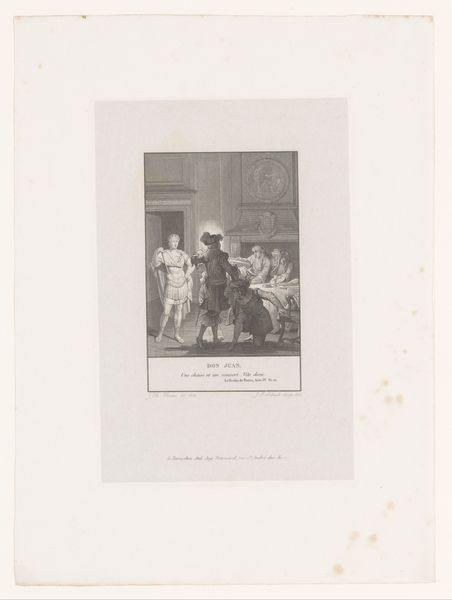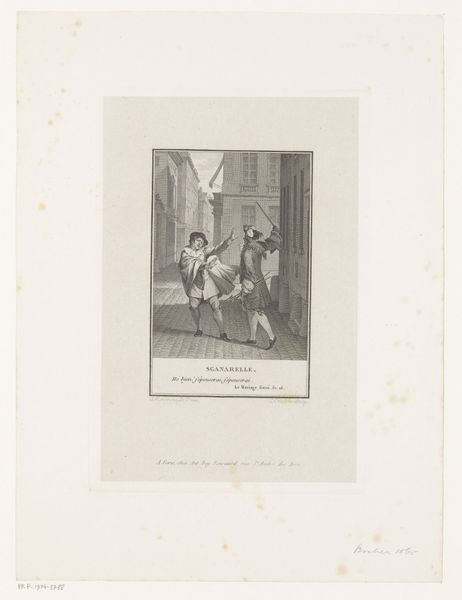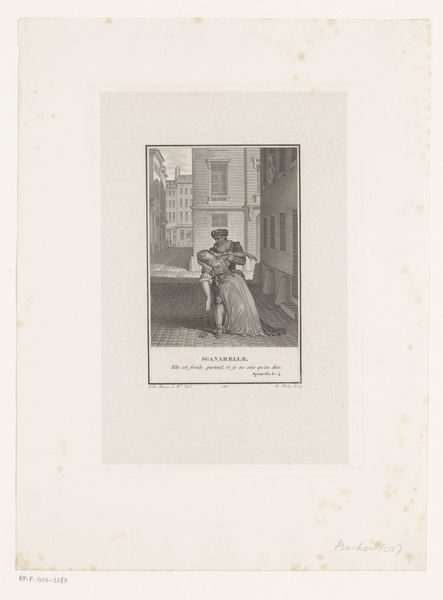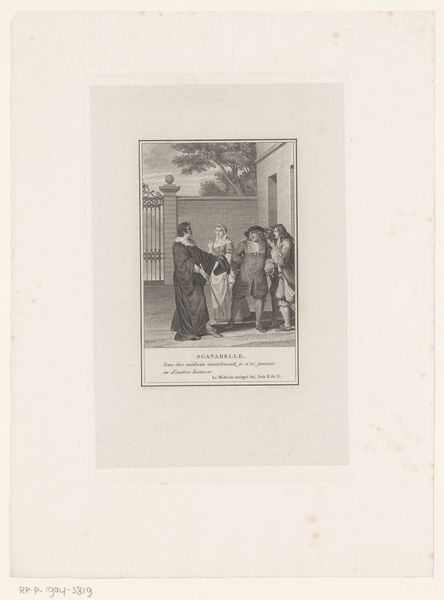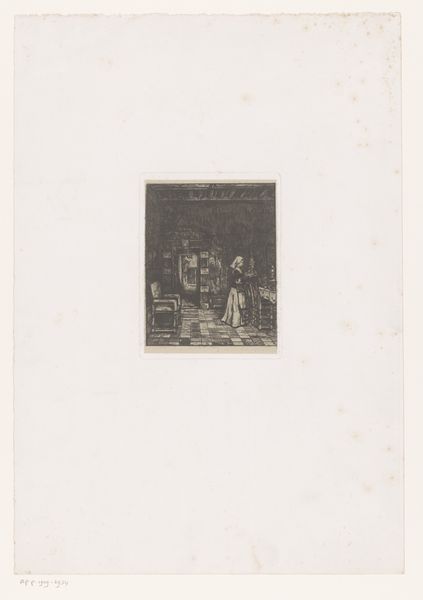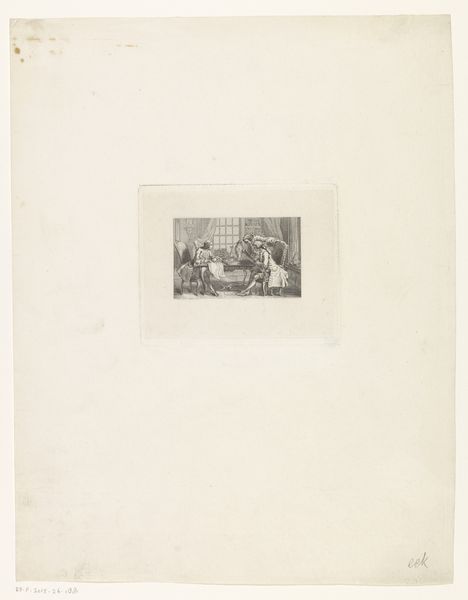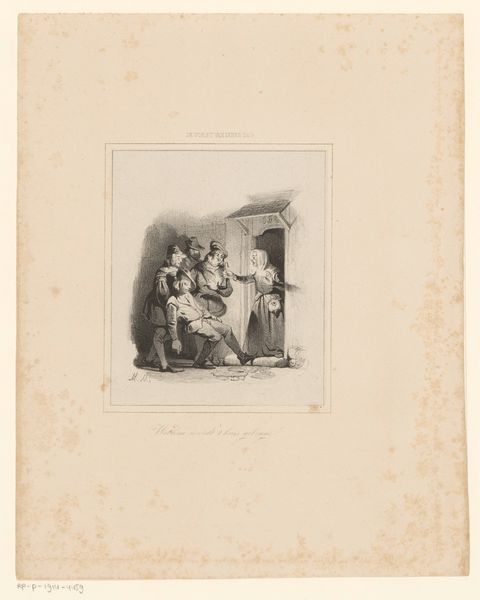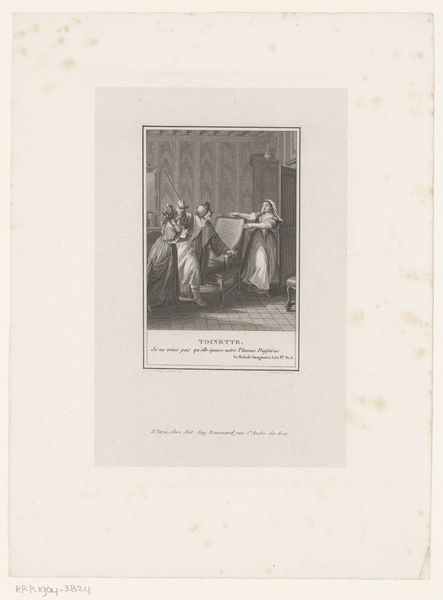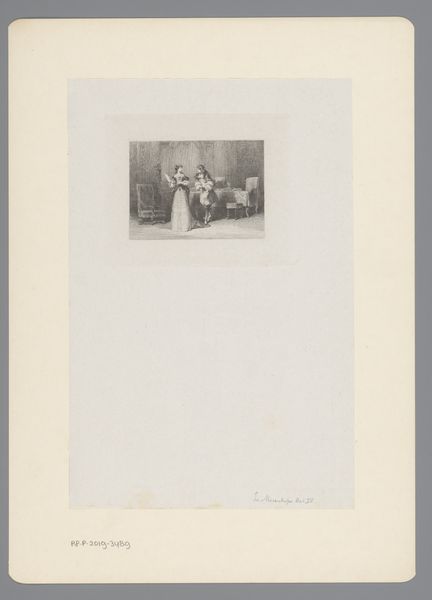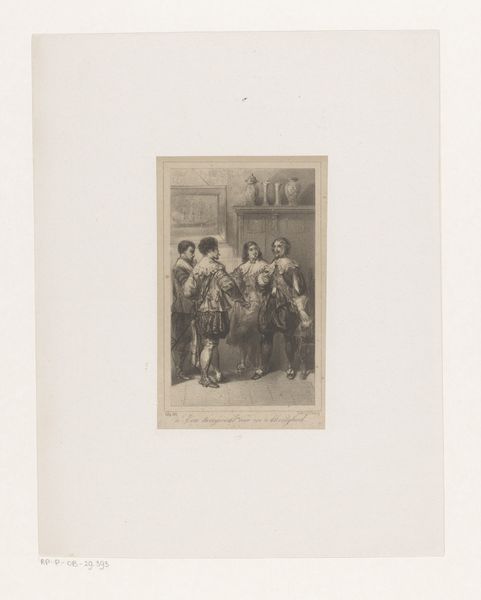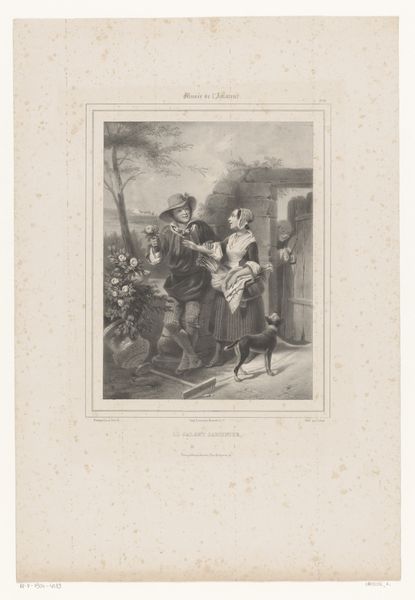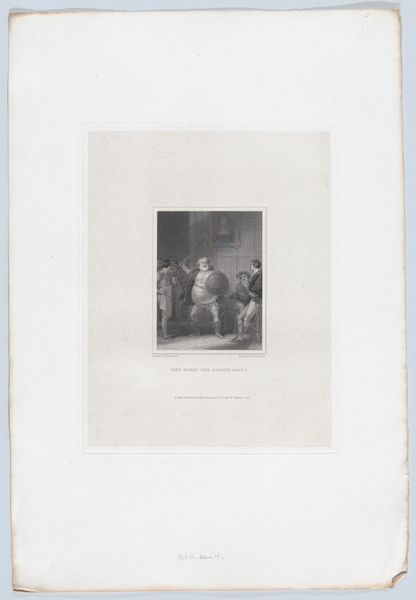
drawing, print, etching, paper, ink, engraving
#
portrait
#
drawing
#
narrative-art
# print
#
etching
#
figuration
#
paper
#
ink
#
romanticism
#
line
#
cityscape
#
genre-painting
#
engraving
Dimensions: height 240 mm, width 162 mm
Copyright: Rijks Museum: Open Domain
Curator: This print by Jean Bosq, dating from 1811-1813, is titled "Young woman with nobleman, stopped by her father". It's an etching, quite detailed. What strikes you most about it? Editor: The scene feels very staged. The architecture suggests a specific place, while the characters remind me of theatre players, particularly the contrast in clothing and pose of the characters. I wonder about the artist’s choice of the etching medium, its specific line qualities and details, and how it enhances or shapes the narrative. What is your perspective on the piece? Curator: From a materialist perspective, let’s think about the social context and production. Etchings were relatively accessible; prints like this circulated widely. Who would have been the target audience? Editor: Probably people who wanted a somewhat affordable way to get their art fix. Prints being reproducible could offer a wide spectrum of access to the less affluent perhaps? Curator: Precisely! These kinds of genre scenes depicted everyday life. So the scene suggests more than just a narrative. What can it reveal about class and gender relations in early 19th-century Paris? Notice how the figures are arranged in this cityscape—how the labor of production comes together in it and becomes commodified as a symbol of power. Editor: Now that you mention it, the father does seem to block not just the nobleman, but access to the backdrop beyond them as well. Curator: Exactly. And considering this was produced during a period of significant social upheaval, that 'everyday life' is a product, a constructed representation made possible by the very specific economic conditions and artistic labour. Editor: This makes me consider how the production of art reflects society's own struggles, class divisions and gender bias. Now, what used to simply feel as 'the backdrop', shows itself as another powerplay on its own. Curator: Indeed! It reveals how art materials, means of production, and visual composition all contribute to reinforcing or challenging dominant social norms.
Comments
No comments
Be the first to comment and join the conversation on the ultimate creative platform.
